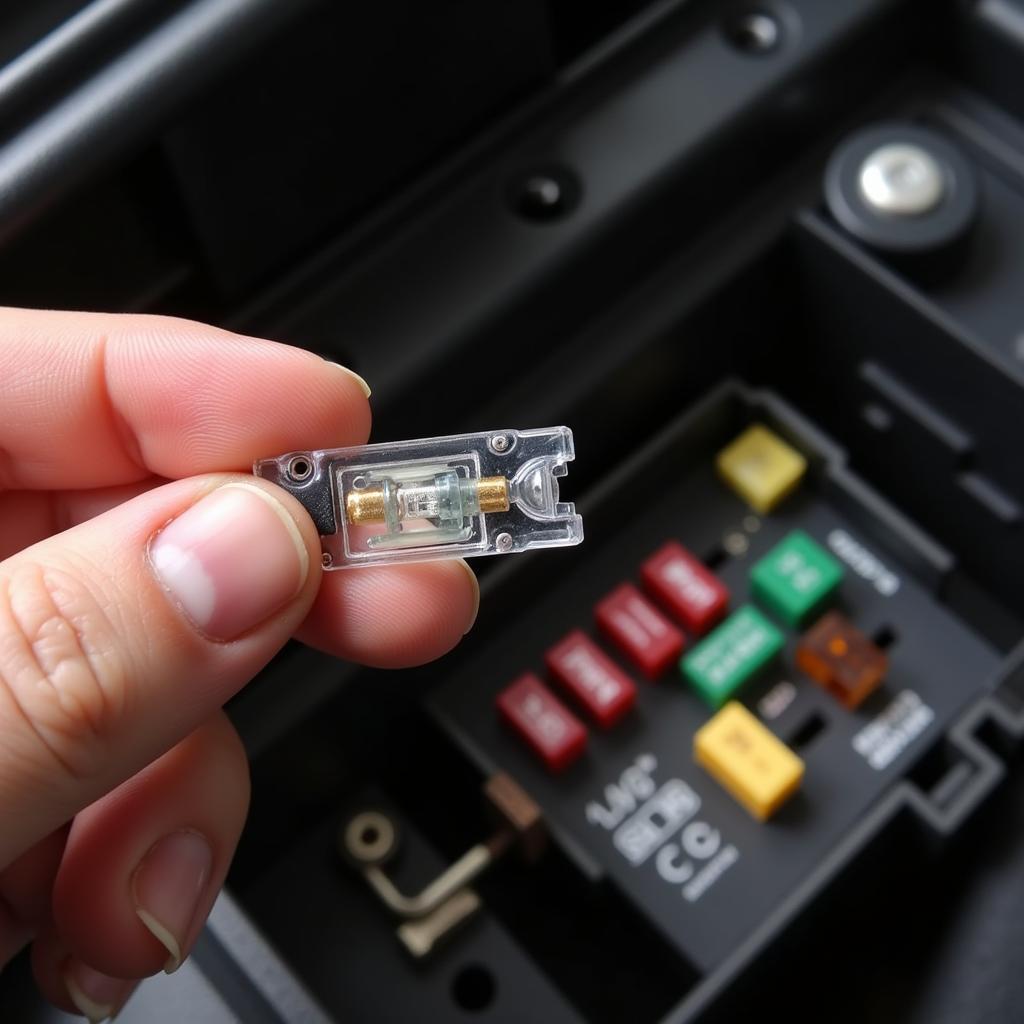Interior car lights, whether they’re dome lights, map lights, or glove box lights, can inexplicably stop working. This can be a minor annoyance, but it’s often a simple fix. This guide will walk you through the most common causes and solutions for malfunctioning interior car lights, empowering you to troubleshoot and fix the issue yourself.
Common Causes of Interior Car Light Problems
Several factors can cause your interior car lights to fail. The most frequent culprits include:
- Blown Fuse: This is often the most common issue. Fuses are designed to protect the electrical system, and a blown fuse in the interior light circuit will cut off power to the lights.
- Burnt-Out Bulb: Like any other light bulb, interior car lights have a limited lifespan and eventually burn out.
- Faulty Switch: The switch that controls the interior lights can malfunction due to wear and tear, or a simple mechanical failure.
- Wiring Issues: Loose or corroded wiring connections can interrupt the flow of electricity to the lights.
- Door Jamb Switch Problems: If the lights flicker or stay on even when the door is closed, the problem likely lies with the door jamb switch, which tells the car when the door is open or closed.
After this initial overview, you may want to explore other automotive issues, like learning how to fix a headliner on a car.
Troubleshooting and Fixing Interior Car Lights: A Step-by-Step Guide
Here’s a detailed guide on How To Fix Interior Car Lights:
- Check the Fuse: Locate your car’s fuse box (usually under the dashboard or in the engine compartment). Consult your owner’s manual to identify the correct fuse for the interior lights. Remove the fuse and inspect it for a broken filament. If the filament is broken, replace it with a new fuse of the same amperage.
- Inspect the Bulb: If the fuse is intact, the next step is to check the bulb itself. Remove the bulb and examine it for signs of burning or damage. If the filament is broken or the bulb appears blackened, replace it with a new one of the same type and wattage.
- Test the Switch: If both the fuse and bulb are good, the problem may be with the switch. Use a multimeter to test the switch for continuity. If the switch is faulty, replace it.
- Examine the Wiring: Carefully inspect the wiring connections to the lights. Look for loose, corroded, or damaged wires. Repair or replace any faulty wiring. This may require more advanced electrical knowledge.
- Check the Door Jamb Switch: If the lights stay on or flicker when the door is closed, the door jamb switch is likely the culprit. Use a multimeter to test the switch. Replace it if it’s faulty.
 Checking a car fuse for breaks
Checking a car fuse for breaks
How to Replace a Car Light Bulb
Replacing an interior car light bulb is usually a straightforward process:
- Locate the Bulb: Identify the specific interior light that isn’t working.
- Remove the Lens: Gently pry off the plastic lens covering the bulb. This might require a small screwdriver or a specialized trim removal tool.
- Remove the Old Bulb: Carefully twist or pull the old bulb out of its socket.
- Install the New Bulb: Insert the new bulb into the socket and twist or push it into place.
- Replace the Lens: Snap the lens back onto the light fixture.
You may be interested in learning how much will it cost to fix a car alternator for another common car issue.
How Much Does it Cost to Fix Interior Car Lights?
The cost to fix interior car lights varies depending on the issue. A new fuse typically costs just a few dollars, while a replacement bulb might cost between $5 and $20. Replacing a switch or repairing wiring can cost more, potentially up to $100 or more depending on the complexity and labor involved.
“Many times, a simple fuse replacement is all that’s needed,” says automotive electrician Robert Miller. “But even for more complex issues, diagnosing and fixing interior car lights is often a manageable DIY project.”
Why Are My Interior Car Lights Dim?
Dim interior car lights can indicate a failing bulb, a loose connection, or a problem with the dimmer switch if your car has one.
 Dim interior car lights in a car at night
Dim interior car lights in a car at night
Learning how to fix loose belt on car can also help you tackle other car maintenance tasks.
Conclusion
Fixing interior car lights is usually a simple and inexpensive DIY repair. By following the steps outlined in this guide, you can save time and money. However, if you’re uncomfortable working with electrical components, it’s always best to consult a qualified mechanic. For further assistance or personalized advice, please connect with us at AutoTipPro. You can reach us at +1 (641) 206-8880 or visit our office at 500 N St Mary’s St, San Antonio, TX 78205, United States.
Understanding basic car maintenance is essential. Similar to this guide on how to fix interior car lights, you can find resources on car fix season 7 episode 8 and chris fix used car chek to enhance your car care knowledge.




Leave a Reply